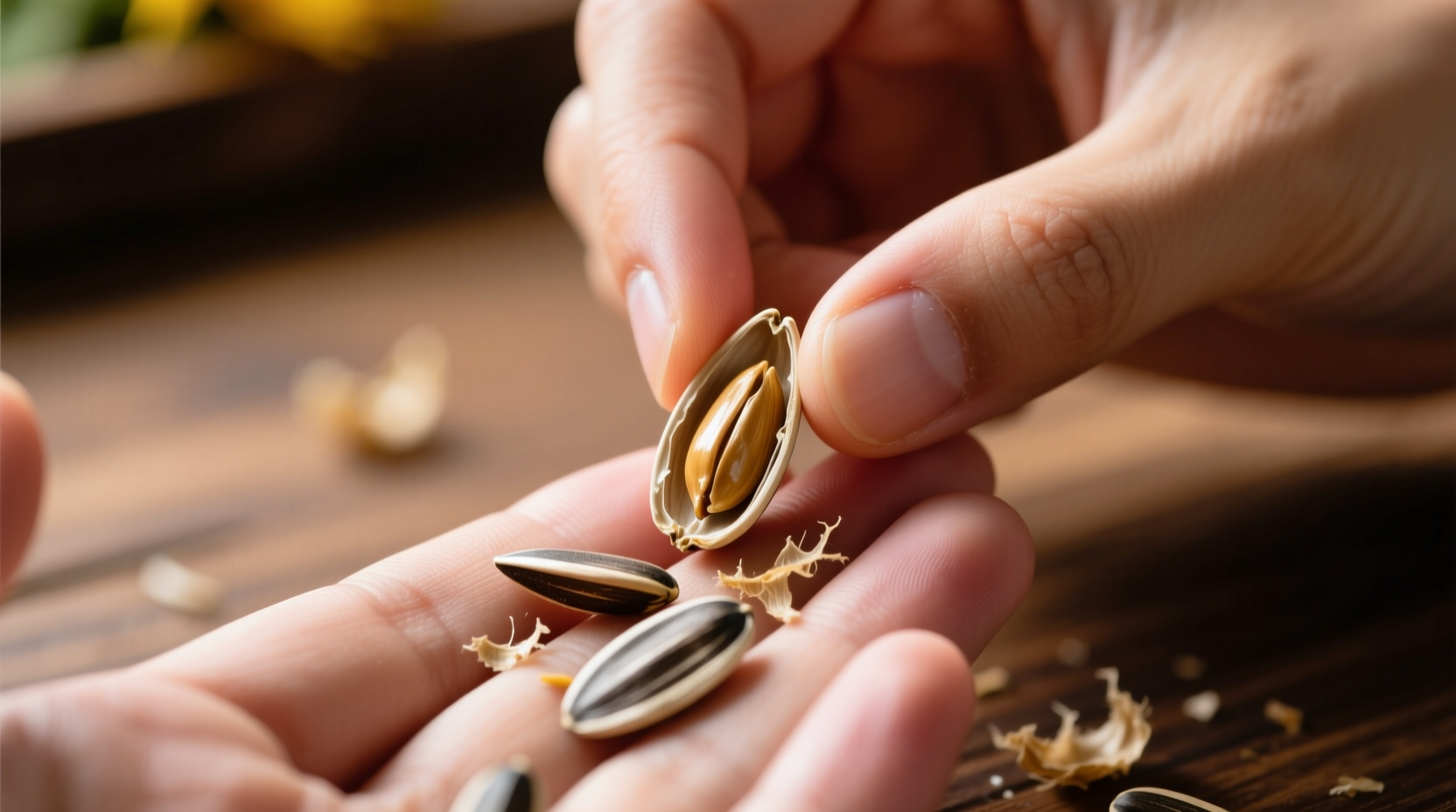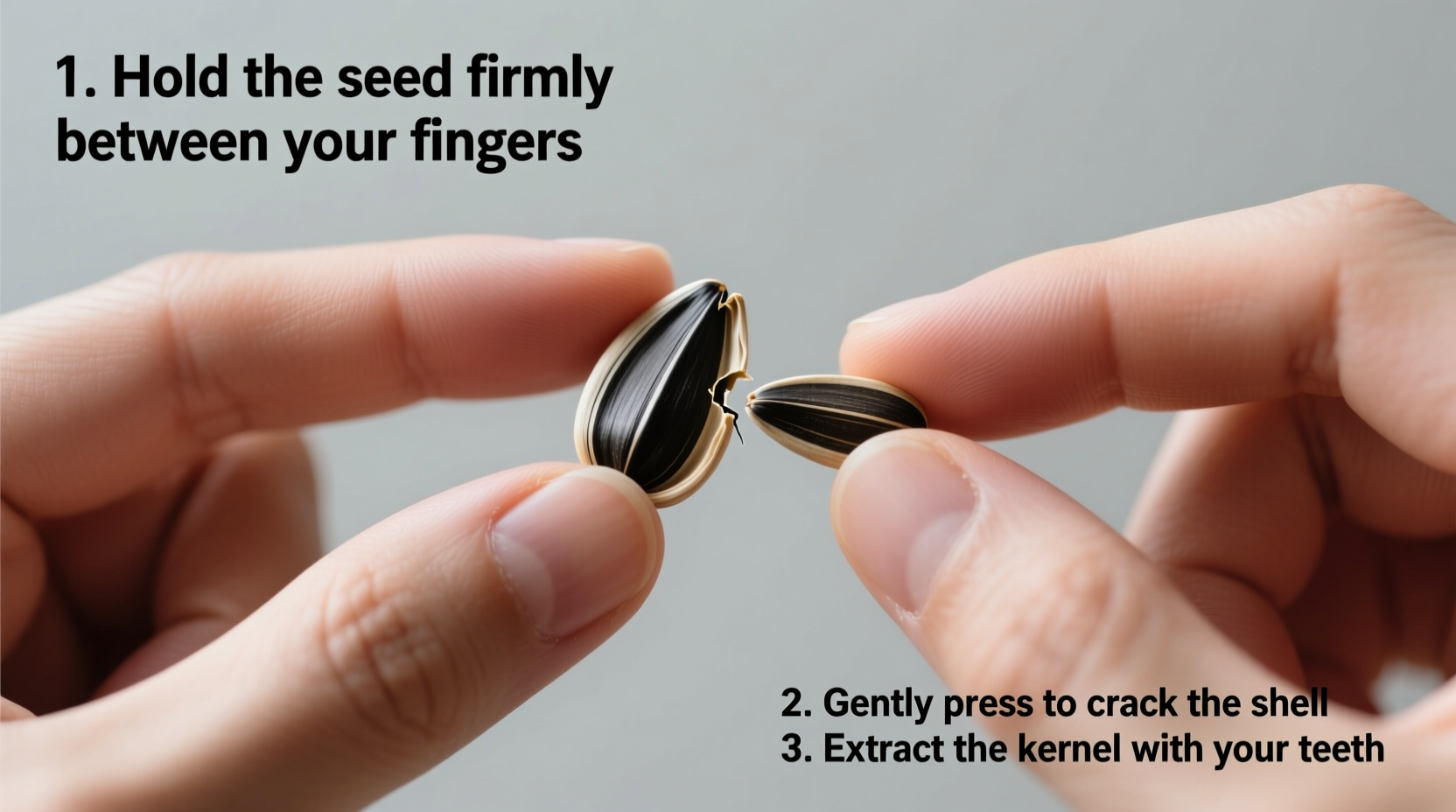Mastering the Art of Sunflower Seed Consumption
Whether you're enjoying sunflower seeds at a baseball game, during a hike, or as a healthy snack at home, knowing the proper technique transforms a simple snack into an enjoyable experience. Millions of people consume sunflower seeds annually, yet many struggle with the most efficient and comfortable method. This guide provides professional techniques used by culinary experts to enjoy sunflower seeds without mess, dental damage, or wasted kernels.
Your Sunflower Seed Eating Journey: A Step-by-Step Approach
Preparation: Selecting Quality Seeds
Before you begin eating, ensure you're working with quality sunflower seeds. Look for seeds that feel heavy for their size, indicating plump kernels inside. Avoid seeds with visible cracks in the shell, which may indicate moisture exposure or rancidity. According to the USDA Agricultural Research Service, properly stored sunflower seeds maintain freshness for up to 3 months at room temperature.
The Standard Technique: Front Teeth Method
This is the most common and efficient approach for eating in-shell sunflower seeds:
- Place one seed horizontally between your upper and lower front teeth
- Gently apply pressure until you hear a light "crack"
- Use your tongue to push the kernel toward your cheek
- Separate the kernel from the shell fragments
- Spit the shell into a designated container (never on the ground)
- Enjoy the kernel
This method works because your front teeth provide precise control while minimizing pressure on molars that could lead to dental issues. Dental professionals at the American Dental Association warn that improper seed-cracking techniques can cause enamel damage over time.
| Method | Best For | Advantages | Limitations |
|---|---|---|---|
| Front Teeth Technique | Casual snacking, social settings | Precise control, minimal mess | Requires practice for beginners |
| Hand Cracking | People with dental work, children | No dental risk, complete control | Slower, less convenient |
| Specialized Tools | Large quantities, commercial settings | Efficient, consistent results | Requires equipment, not portable |
Alternative Methods for Special Situations
Not every situation calls for the standard technique. Consider these alternatives based on your circumstances:
For People with Dental Work
If you have crowns, braces, or sensitive teeth, use your fingers to crack seeds instead. Place the seed on a hard surface and apply gentle pressure with your thumb. This Mayo Clinic-recommended approach prevents potential damage to dental work while still allowing you to enjoy the nutritional benefits.
For Social Settings
When eating with others, maintain etiquette by:
- Using a small bowl for discarded shells
- Cracking seeds quietly
- Avoiding spitting shells directly into napkins (creates messy residue)
- Disposing of shells properly when finished
Nutritional Benefits: Why It's Worth Learning Proper Technique
Sunflower seeds pack impressive nutritional value when properly consumed. A single ounce (about 1/4 cup) provides:
- 37% of your daily vitamin E needs
- 30% of recommended magnesium intake
- 10 grams of plant-based protein
- Healthy monounsaturated and polyunsaturated fats
Research from the USDA National Nutrient Database shows that proper consumption technique ensures you maximize kernel extraction, getting the full nutritional benefit from each seed rather than wasting valuable nutrients in broken kernels.
Avoiding Common Mistakes
Even experienced sunflower seed eaters make these frequent errors:
- Using molars instead of front teeth: Creates excessive pressure that can damage enamel
- Cracking multiple seeds at once: Leads to inconsistent pressure and wasted kernels
- Swallowing shells accidentally: Can cause digestive discomfort
- Leaving shells on the ground: Creates environmental hazards for wildlife
Storage Tips for Leftover Seeds
Proper storage maintains freshness for future snacking. After opening a bag:
- Transfer to an airtight container
- Store in a cool, dark place
- Refrigerate for extended storage (up to 6 months)
- Freeze for long-term preservation (up to 1 year)
The FDA Food Code recommends keeping seeds away from strong-smelling foods as they readily absorb odors that can compromise flavor.
Cultural Context: Sunflower Seeds Around the World
Sunflower seed consumption varies significantly across cultures. In Eastern Europe, particularly Ukraine (where sunflowers are the national flower), seed eating is a social tradition often accompanied by specific etiquette. In China, roasted sunflower seeds are customary during Lunar New Year celebrations. Understanding these cultural contexts enhances your appreciation of this simple snack.

Final Tips for Sunflower Seed Mastery
With practice, proper sunflower seed consumption becomes second nature. Remember to pace yourself—eating too many too quickly can cause digestive discomfort. Stay hydrated, as the salt content in many roasted varieties increases thirst. Most importantly, enjoy the process! The rhythmic cracking and tasting creates a mindful eating experience that connects you with a snack tradition spanning centuries.
Can eating sunflower seeds damage your teeth?
When eaten properly using front teeth with controlled pressure, sunflower seeds shouldn't damage healthy teeth. However, using molars or excessive force can cause enamel wear over time. People with dental work should use hand-cracking methods to avoid potential damage to crowns or veneers.
What's the best way to dispose of sunflower seed shells?
Always use a dedicated container for shells rather than spitting them on the ground. Small bowls or paper cups work well. Proper disposal prevents environmental hazards for wildlife and maintains clean public spaces. Never leave shells in napkins as they create messy residue.
How many sunflower seeds should I eat in one sitting?
A standard serving is about 1 ounce (1/4 cup or approximately 140-165 seeds), providing 165 calories. Most nutritionists recommend limiting consumption to this amount per sitting to avoid excessive calorie intake while still gaining nutritional benefits.
Why do some sunflower seeds taste bitter?
Bitterness usually indicates rancidity from improper storage. Sunflower seeds contain oils that oxidize when exposed to air, light, or heat. Always store in airtight containers in cool, dark places. If seeds taste bitter, discard them as rancid oils provide no nutritional benefit and may cause digestive discomfort.











 浙公网安备
33010002000092号
浙公网安备
33010002000092号 浙B2-20120091-4
浙B2-20120091-4